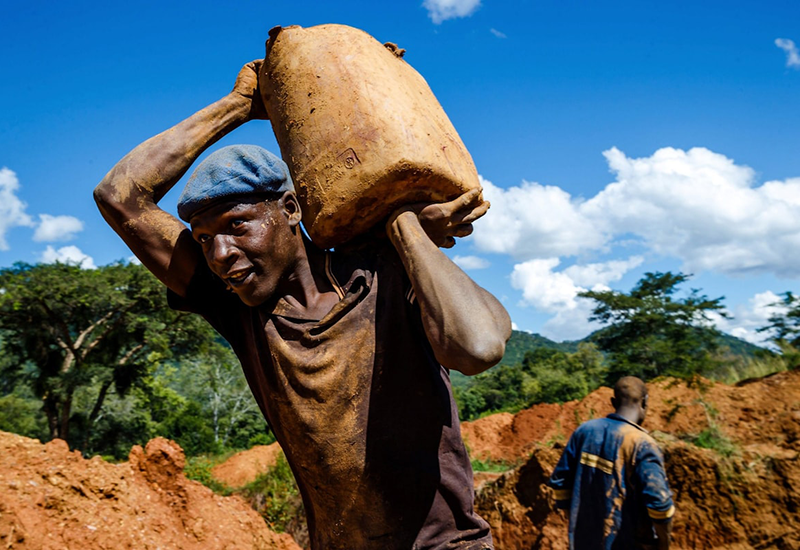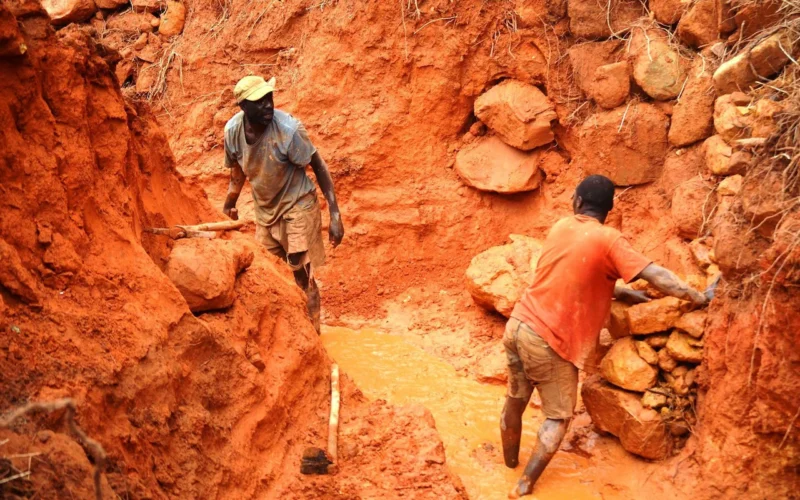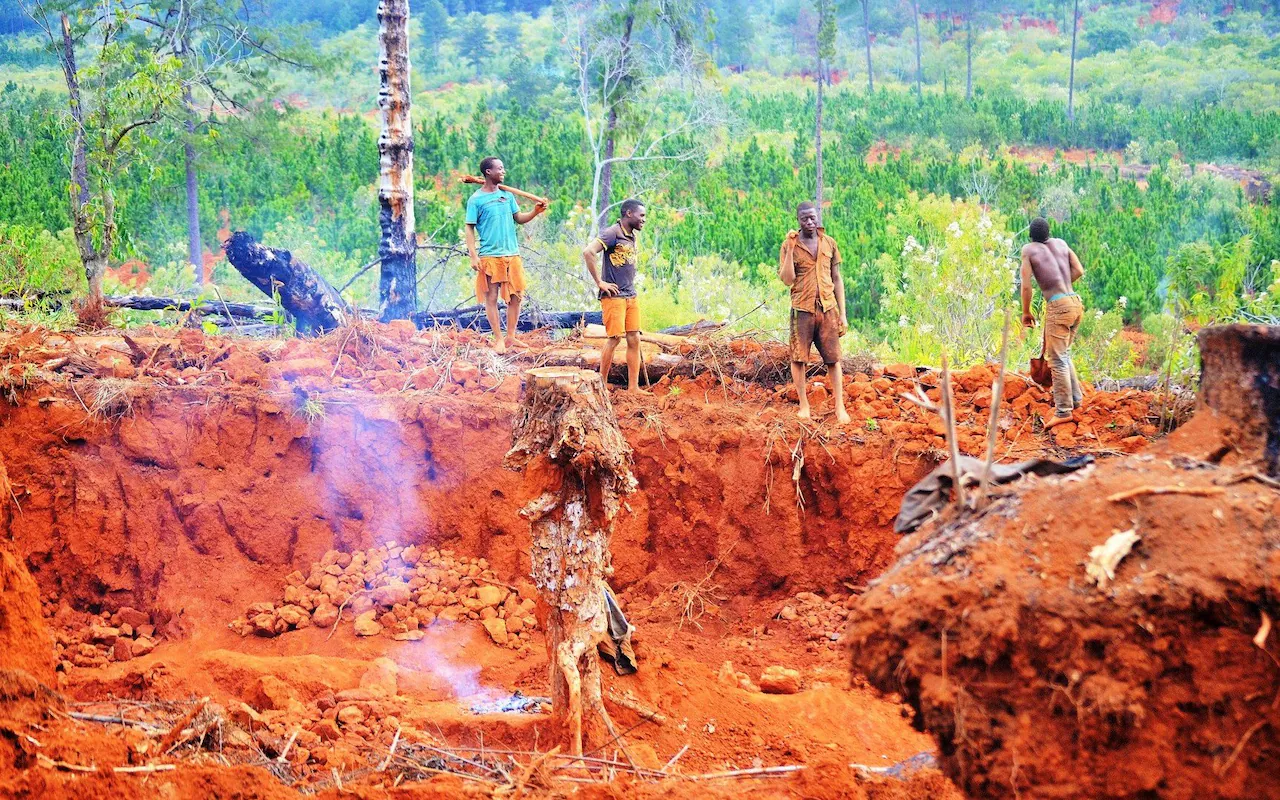- Community, Society
- No Comment
Gold rush brings disaster as thousands of illegal gold miners descend on region

A river runs through Penhalonga, a rich gold mining area about 18 kilometres north of Zimbabwe’s eastern border city of Mutare.
Not so long ago, this waterway used to nourish thousands of local people, livestock, croplands and pastures as it meanders towards its confluence with the river Odzi. But the tributary is now heavily polluted; its waters murky and reddish brown and its bed heavily silted.
The ecological disaster is man made. Penhalonga has been overrun by thousands of illegal miners – men, women and young children – who have come to the region in search of gold.
As in so many gold rushes from history, the prospectors are causing immense damage. They are hacking down acre upon acre of lush vegetation.
They are clogging and redirecting streams with dams and waste materials or “tailings”. And worst of all, they are poisoning water-sources with the neuro-toxin mercury, endangering not only their own lives but the lives of all those who live nearby.
Weston Makoni, chairman of the Penhalonga Residents Association, told The Telegraph that the mining threatened to turn the area into a wasteland. “The illegal gold miners are now everywhere,” he said. “They are polluting our water and environment with mercury. Our livestock is also drinking this poisoned water; our crops are irrigated with the poisoned water. And the mercury is finding its way into our food chain.”
Zimbabwe’s crumbing economy, long afflicted by poor management, political conflict and climate change, has pushed millions into taking desperate measures to survive.
It is estimated that some 800,000 are now involved in illegal mining, and many will stop at nothing as they hunt for gold. In the country’s southeastern Chimanimani district, miners are tearing down vast timber plantations and farmlands. While in Kwekwe, in the center of the country, they are destroying schools, houses, roads and even railway lines.
In many ways it is not surprising – the World Food Programme estimates that nearly three million people in the country do not have enough food – but the use of mercury is causing immense damage.

The liquid metal, once famous for driving Victorian English hatters and mirror makers mad, is used the world over by small-scale miners to pinpoint and isolate gold. It is spread in the mud and mixes with flecks of gold to create an amalgam that is then set aside and burned. Gold is left behind, while the mercury vapours are left to leach into the environment.
Zimbabwe’s Environmental Management Agency has warned it has no methods of cleaning up mercury from the environment.
Mr Makoni said children in the area were abandoning school to join the lucrative but dangerous gold rush. He said that on one afternoon in March this year, he saw two young miners brazenly digging for gold just behind a small church in the area.
“The situation is becoming so dire. And we don’t even know what to do,” he said.
The history of gold mining in Penhalonga dates back more than a century. Over that time, different companies have come and gone and today mining is dominated by small time prospectors who operate illegally. And mercury, they say, is their lifeblood.
“In gold mining, mercury is everything. We use it to extract the gold. But we are not handling it carelessly; mercury is very expensive here. We try to be careful,” said Lovemore Chikuni, a miner in the Penhalonga area.

In an effort to curb the use of mercury in Zimbabwe, the country ratified the Minamata Convention on Mercury in 2020 which banned the use of the toxin in gold mining.
The convention – a global treaty to protect human health and the environment from adverse effects of mercury – was first adopted in Kumamoto, Japan in 2013.
But in Zimbabwe, mercury continues to flow in abundance, albeit illegally, funded by the global market for gold.
“We buy the mercury from some rich gold buyers”, said Mr Chikuni. “These buyers want us to produce as much gold as possible so they make sure they supply us with the mercury. But I don’t know where they are getting it from. I suspect they are smuggling it from neighbouring countries”.
At least one study showed that there were increased levels of mercury in urine and blood samples taken in two artisanal gold mining areas in Zimbabwe.
“Mercury exposure is a major occupational health risk for miners,” the research said.
Mercury is neurotoxic and chronic exposure to the chemical leads to serious health issues, including damage to the nervous system, kidney, liver and immune system over time.

Symptoms of mercury poisoning include numbness in the hands and feet, muscle weakness, skin rush and impaired vision, speech and hearing as well as mood swings and memory loss.
In Zimbabwe, artisanal and small scale gold mining represents the greatest source of anthropogenic mercury pollution, experts say.
Another study revealed that in Kadoma – another gold rich area in Zimbabwe – women were exposed to mercury while living in mining areas or when working directly with the chemical resulting in breast fed children being exposed.
“Breast fed infants are exposed via mercury contaminated milk and the general environmental mercury exposure,” the study said.
“The pathways [for exposure] seemed to be directly by living in an exposed area, inhaling mercury vapour from smelting processes next to the infant’s home and as soon as they eat solid foods by contaminated local food products,” added the authors.
James Mupfumi, a mining and environmental expert based in Zimbabwe, told The Telegraph that mercury was still found in abundance in mining areas, not only Penhalonga, but across the country.
“Despite the effects on health, many artisanal miners are still using it to process their gold. The chemical is found everywhere in illegal gold mining areas. Sadly, mercury is finding its way into our environment. The effects are devastating,” said Mr Mupfumi who is also the director of the Centre for Research and Development, a Zimbabwe based investigative NGO.
Mr Mupfumi added there were efforts to find safer ways to extract gold without using mercury. One such technique using sodium borate or “Borax” was introduced in Cabo Delgado in neighbouring Mozambique. The chemical is much less toxic than mercury.
“There is a need to raise awareness among the gold miners on the dangers of mercury and safer alternatives to mercury in gold processing,” Mupfumi said.
